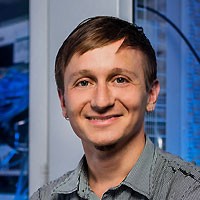Locally optimal subsampling strategies for full matrix capture measurements in pipe inspection. - In: Applied Sciences, ISSN 2076-3417, Bd. 11 (2021), 9, 4291, S. 1-14
In ultrasonic non-destructive testing, array and matrix transducers are being employed for applications that require in-field steerability or which benefit from a higher number of insonification angles. Having many transmit channels, on the other hand, increases the measurement time and renders the use of array transducers unfeasible for many applications. In the literature, methods for reducing the number of required channels compared to the full matrix capture scheme have been proposed. Conventionally, these are based on choosing the aperture that is as wide as possible. In this publication, we investigate a scenario from the field of pipe inspection, where cracks have to be detected in specific areas near the weld. Consequently, the width of the aperture has to be chosen according to the region of interest at hand. On the basis of ray-tracing simulations which incorporate a model of the transducer directivity and beam spread at the interface, we derive application specific measures of the energy distribution over the array configuration for given regions of interest. These are used to determine feasible subsampling schemes. For the given scenario, the validity/quality of the derived subsampling schemes are compared on the basis of reconstructions using the conventional total focusing method as well as sparsity driven-reconstructions using the Fast Iterative Shrinkage-Thresholding Algorithm. The results can be used to effectively improve the measurement time for the given application without notable loss in defect detectability.
https://doi.org/10.3390/app11094291
Subsampling approaches for compressed sensing with ultrasound arrays in non-destructive testing. - In: Sensors, ISSN 1424-8220, Bd. 20 (2020), 23, 6734, insges. 23 S.
Full Matrix Capture is a multi-channel data acquisition method which enables flexible, high resolution imaging using ultrasound arrays. However, the measurement time and data volume are increased considerably. Both of these costs can be circumvented via compressed sensing, which exploits prior knowledge of the underlying model and its sparsity to reduce the amount of data needed to produce a high resolution image. In order to design compression matrices that are physically realizable without sophisticated hardware constraints, structured subsampling patterns are designed and evaluated in this work. The design is based on the analysis of the Cramér–Rao Bound of a single scatterer in a homogeneous, isotropic medium. A numerical comparison of the point spread functions obtained with different compression matrices and the Fast Iterative Shrinkage/Thresholding Algorithm shows that the best performance is achieved when each transmit event can use a different subset of receiving elements and each receiving element uses a different section of the echo signal spectrum. Such a design has the advantage of outperforming other structured patterns to the extent that suboptimal selection matrices provide a good performance and can be efficiently computed with greedy approaches.
https://doi.org/10.3390/s20236734
Hardware architecture for ultra-wideband channel impulse response measurements using compressed sensing. - In: 28th European Signal Processing Conference (EUSIPCO 2020), (2020), S. 1663-1667
We propose a compact hardware architecture for measuring sparse channel impulse responses (IR) by extending the M-Sequence ultra-wideband (UWB) measurement principle with the concept of compressed sensing. A channel is excited with a periodic M-sequence and its response signal is observed using a Random Demodulator (RD), which observes pseudo-random linear combinations of the response signal at a rate significantly lower than the measurement bandwidth. The excitation signal and the RD mixing signal are generated from compactly implementable Linear Feedback Shift registers (LFSR) and operated from a common clock. A linear model is derived that allows retrieving an IR from a set of observations using Sparse-Signal-Recovery (SSR). A Matrix-free model implementation is possible due to the choice of synchronous LFSRs as signal generators, resulting in low computational complexity. For validation, real measurement data of a time-variant channel containing multipath components is processed by simulation models of our proposed architecture and the classic M-Sequence method. We show successful IR recovery using our architecture and SSR, outperforming the classic method significantly in terms of IR measurement rate. Compared to the classic method, the proposed architecture allows faster measurements of sparse time-varying channels, resulting in higher Doppler tolerance without increasing hardware or data stream complexity.
https://doi.org/10.23919/Eusipco47968.2020.9287454
Acoustic process monitoring in laser beam welding. - In: 11th CIRP Conference on Photonic Technologies [LANE 2020], (2020), S. 763-768
Structure-borne acoustic emission (AE) measurement shows major advantages regarding quality assurance and process control in industrial applications. In this paper, laser beam welding of steel and aluminum was carried out under varying process parameters (welding speed, focal position) in order to provide data by means of structure-borne AE and simultaneously high-speed video recordings. The analysis is based on conventionally (e.g. filtering, autocorrelation, spectrograms) as well as machine learning methods (convolutional neural nets) and showed promising results with respect to the use of structure-borne AE for process monitoring using the example of spatter formation.
https://doi.org/10.1016/j.procir.2020.09.139
Cramér-Rao bounds for flaw localization in subsampled multistatic multichannel ultrasound NDT data. - In: 2020 IEEE International Conference on Acoustics, Speech, and Signal Processing, (2020), S. 4960-4964
https://doi.org/10.1109/ICASSP40776.2020.9053523
Ein portabler, vielfältig einsetzbarer 3D-Positionierer für Synthetik-Apertur-Ultraschallmessungen in der ZfP. - In: DACH-Jahrestagung 2019, (2019), insges. 2 S.
Paper P41
3D reconstruction of handheld data by SAFT and the influence of measurement inaccuracies. - In: 2019 IEEE International Ultrasonics Symposium (IUS), (2019), S. 2095-2098
https://doi.org/10.1109/ULTSYM.2019.8926018
Total focusing method with subsampling in space and frequency domain for ultrasound NDT. - In: 2019 IEEE International Ultrasonics Symposium (IUS), (2019), S. 2103-2106
https://doi.org/10.1109/ULTSYM.2019.8926040
SAFT processing for manually acquired ultrasonic measurement data with 3D smartInspect. - In: Insight, ISSN 0007-1137, Bd. 61 (2019), 11, S. 663-669
https://doi.org/10.1784/insi.2019.61.11.663
Defect detection from compressed 3-D ultrasonic frequency measurements. - In: 27th EUSIPCO 2019 - European Signal Processing Conference, (2019), insges. 5 S.
https://doi.org/10.23919/EUSIPCO.2019.8903133


